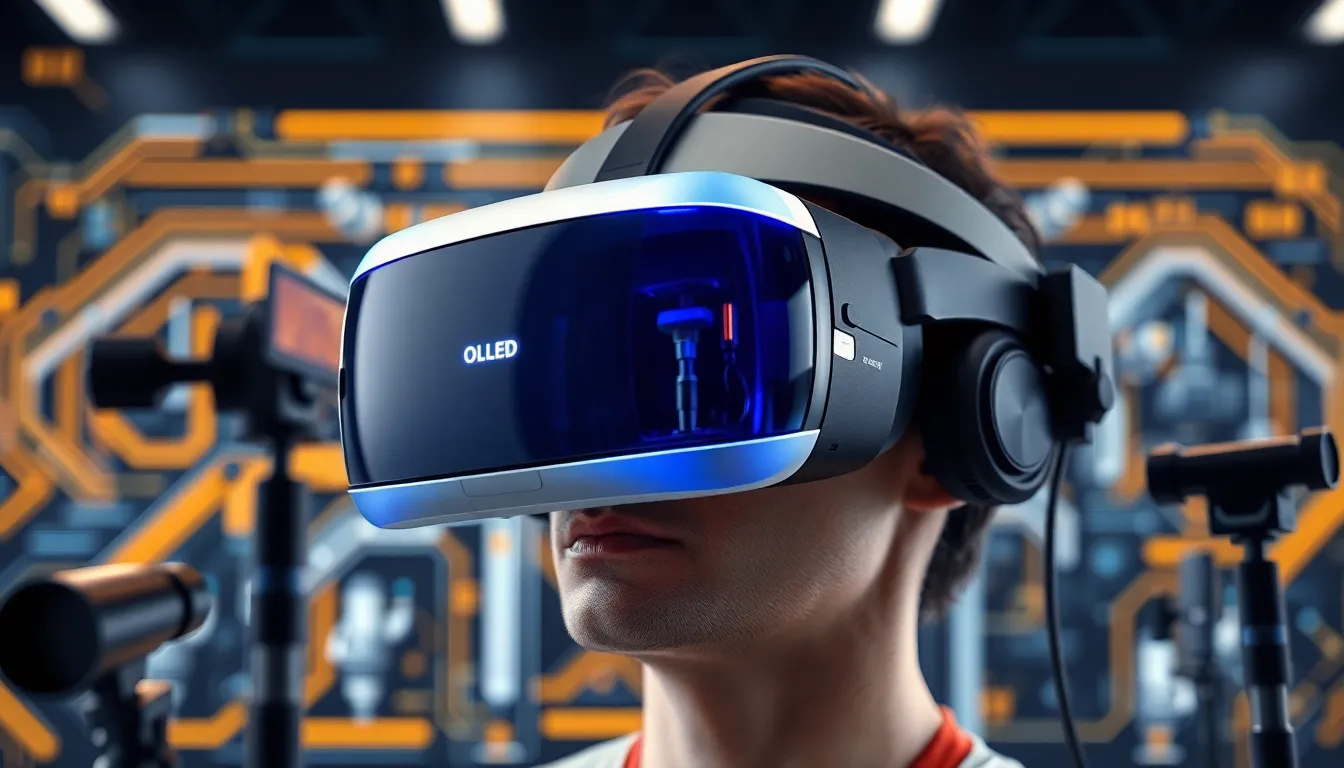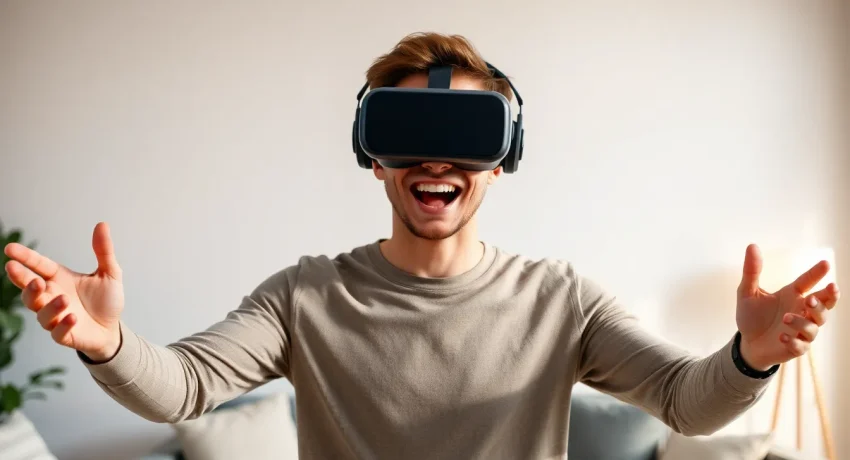Table of Contents
ToggleVirtual reality headsets might seem like magic, but there’s some serious tech wizardry behind the scenes. Imagine slipping on a pair of futuristic goggles and being transported to a world where you can battle dragons or dance with aliens. Sounds fun, right? But how do these devices actually pull off such mind-bending tricks?
Overview of VR Technology
Virtual reality (VR) technology immerses users in a 3D environment that simulates real-world settings. Headsets contain high-resolution displays that deliver visuals, combining two screens to create depth perception. Motion sensors in the headsets track head movements, enabling users to look around naturally.
Controllers enhance interaction within virtual spaces. They incorporate buttons, triggers, and touchpads, allowing users to manipulate their environment easily. Many VR systems utilize external cameras or sensors to track the user’s position in real time, creating an accurate spatial experience.
Audio plays a pivotal role in VR immersion. Spatial audio systems provide sound cues that change as users move, reinforcing the sense of presence within the virtual world. This combination of visual and auditory elements generates a compelling experience.
Software development kits (SDKs) facilitate content creation for VR platforms. Developers utilize these tools to design applications and games tailored for VR experiences, ensuring user engagement. Gaming, education, and training simulations represent popular applications of this technology.
User comfort is critical in VR headset design. Lightweight materials and adjustable straps enhance wearability, reducing fatigue during extended use. Display technology, such as OLED panels, minimizes motion blur, creating a smoother experience.
Incorporating haptic feedback in controllers elevates immersion. Users feel realistic sensations, such as vibrations from virtual actions, reinforcing engagement with the virtual environment. These advancements continually improve the overall VR experience, marking a significant evolution in entertainment and interaction.
Key Components of VR Headsets

Virtual reality headsets rely on several key components to deliver immersive experiences. Each of these elements plays a crucial role in how users interact with virtual environments.
Display Technology
Display technology forms the foundation of a VR headset’s visual experience. High-resolution screens, such as OLED or LCD panels, enhance image clarity. Refresh rates above 90Hz reduce motion blur, allowing smooth transitions during fast movements. Additionally, field of view typically spans between 100 to 110 degrees, simulating natural peripheral vision. Some headsets incorporate advanced features like foveated rendering, improving performance by reducing the rendering load outside the user’s direct line of sight. Enhanced color accuracy and brightness elevate realism, thereby fostering deeper engagement.
Sensors and Tracking
Sensors and tracking systems enable precise movement detection within the virtual environment. Inertial measurement units (IMUs), comprising accelerometers and gyroscopes, track head orientation and movement. External cameras or sensors can provide six degrees of freedom (6DoF), allowing users to move in space and interact with objects accurately. Positional tracking updates in real time, ensuring a seamless experience as users navigate virtual worlds. Some headsets employ inside-out tracking using cameras on the device, while others require external base stations. Combined, these technologies facilitate the creation of an immersive and responsive VR experience.
How Do VR Headsets Work?
VR headsets combine advanced technology to create immersive environments, simulating real-world experiences in a virtual space. They employ various components to achieve this.
The Immersion Experience
The immersion experience starts with high-resolution displays that fill the user’s field of vision. Users perceive depth through stereo imagery, which enhances their sense of presence. Advanced display technology featuring refresh rates of over 90Hz reduces motion blur, making movements appear smooth. Peripheral vision simulates realism with a field of view between 100 and 110 degrees. Furthermore, audio systems utilize spatial sound, altering audio cues based on user positioning, reinforcing the virtual experience.
Real-Time Interaction
Real-time interaction occurs through precise tracking of head and body movements. Inertial measurement units (IMUs) and external cameras work together to ensure accurate motion detection. Users enjoy six degrees of freedom (6DoF), allowing movement up, down, left, and right. Controllers equipped with buttons and touchpads facilitate navigation and manipulation within the virtual world. Haptic feedback enhances interactions by providing physical sensations in response to virtual tasks. The combination of these technologies enables users to engage fluidly and naturally within immersive experiences.
Popular VR Headset Brands
Several notable brands dominate the VR headset market, each offering unique features and experiences.
Oculus leads the industry with popular models like the Quest 2 and Rift S. Oculus Quest 2 provides a standalone experience with high-resolution displays and extensive game libraries.
HTC Vive focuses on premium VR experiences, featuring models like Vive Pro 2. This brand targets enthusiasts with superior graphics, extensive tracking capabilities, and high refresh rates.
Sony produces the PlayStation VR, tailored for console gamers. This headset integrates seamlessly with PlayStation systems, providing immersive gameplay focused on popular game titles.
Valve has made a significant impact with the Valve Index. This headset stands out for its accurate tracking and high-quality audio, making it a favorite among gamers seeking detailed VR experiences.
Samsung, through its Odyssey series, targets Windows Mixed Reality users. The Samsung Odyssey+ offers a balanced combination of visuals and comfort, appealing to both casual and serious gamers.
Pimax offers ultra-wide field of view headsets for enthusiasts. Their models, such as Pimax 8K, deliver stunning visuals, attracting users who require expansive views in their VR experiences.
Microsoft supports the VR and augmented reality market with its HoloLens. While it focuses more on mixed reality experiences, it remains a prominent player thanks to enterprise applications.
Each of these brands contributes to a diverse VR landscape, providing options that cater to various interests and user requirements. Their advancements continually push the boundaries of immersive technology, shaping the future of virtual reality.
VR headsets represent a remarkable fusion of technology and creativity. They allow users to step into immersive worlds that blend entertainment, education, and training. The combination of high-resolution displays, precise tracking, and intuitive controllers creates experiences that feel incredibly real.
As the technology continues to evolve, advancements in comfort and performance will further enhance user engagement. From gaming to professional applications, VR’s potential is vast and exciting. The ongoing innovation in headset design and functionality will undoubtedly shape the future of how people interact with virtual environments. With each new development, the boundary between reality and the virtual world becomes increasingly blurred.




